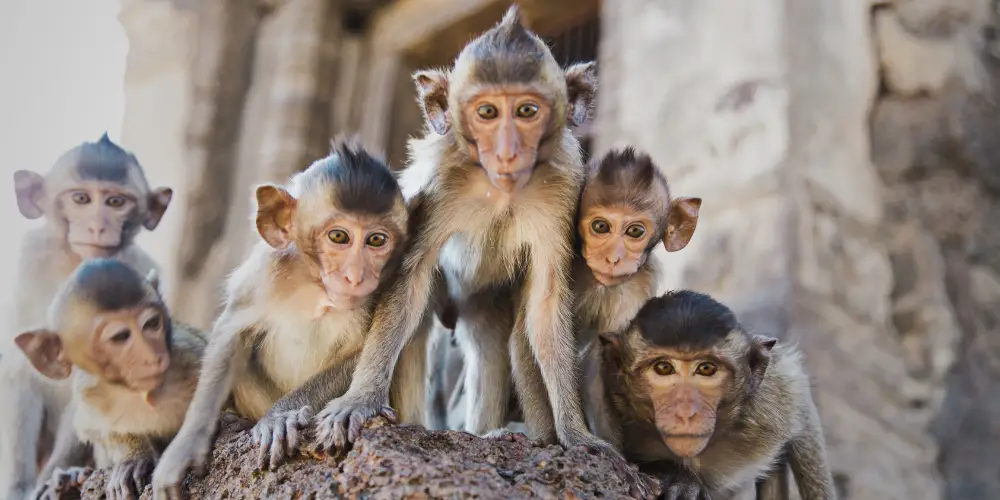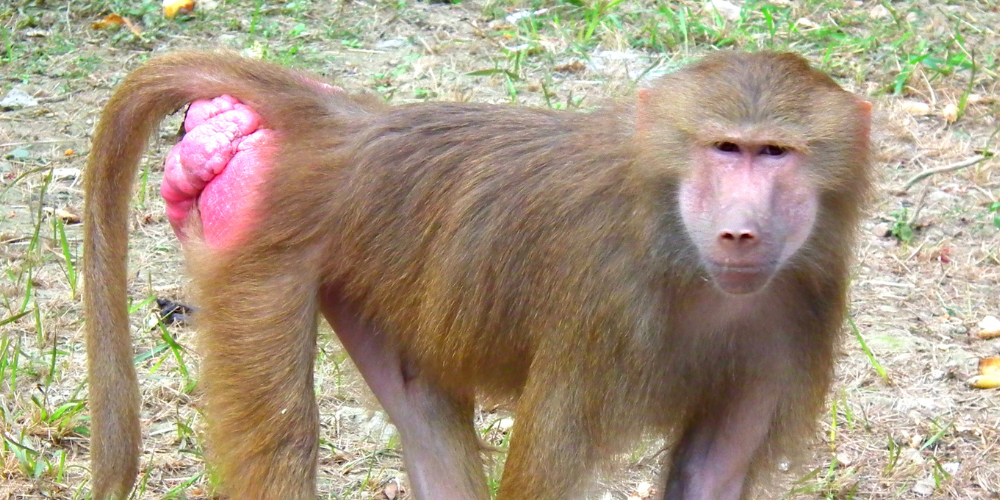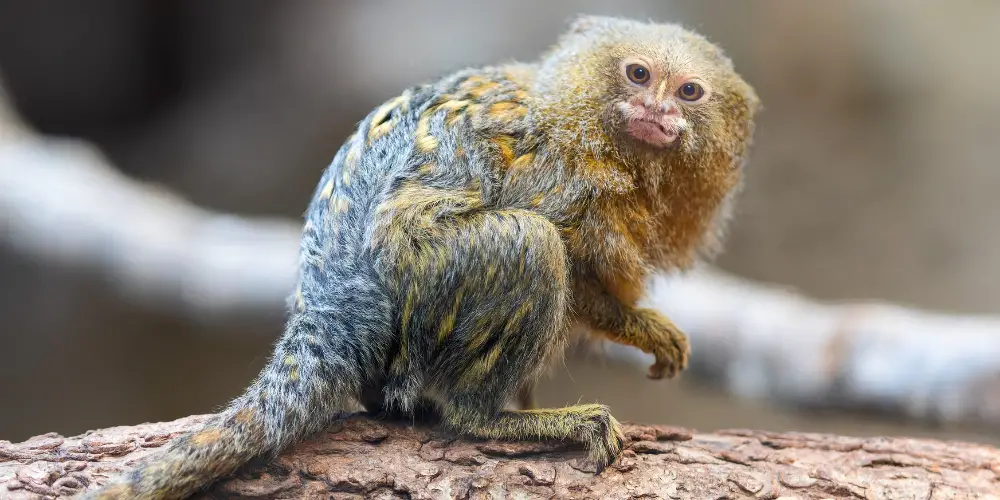If you’re searching for the term used to describe a group of monkeys, look no further:
A group of monkeys is called a “troop,” but alternative names include “band” and “barrel.” Troops vary in size, providing monkeys with protection, support, and resources. These terms emphasize their complex social dynamics.
In this article, we will explore the origin of these terms and delve into the fascinating world of monkey social dynamics, troop formation factors, and the benefits of living in a troop.
Let’s first look at the origins of the terms used to describe a group of monkeys.
Origin of the Term

The terms “troop,” “band,” and “barrel” used to describe a group of monkeys have distinct origins:
- Troop: The word “troop” comes from the Middle French word “troupe,” which in turn has its origins in the Old French word “trope” or “troupe,” meaning a group or company of people. The term likely arose due to the complex social structure and interactions among monkeys, which resemble human groups in many ways. The word “troop” has been used to describe a group of soldiers, actors, or other people, and eventually, it was applied to monkeys because of their social nature.
- Band: The term “band” has its roots in the Middle English word “bande,” which is derived from the Old Norse word “band” and the Old French word “bende.” Both of these words mean a group or a company of people bound together, reflecting the close-knit nature of monkey groups. Using “band” to describe a group of monkeys emphasizes their cooperative and communal behavior, much like a group of people working together.
- Barrel: The origin of the term “barrel” for a group of monkeys is not well-documented, and its usage is more colloquial and whimsical. It is possible that the term was coined due to the playful and energetic nature of monkeys, who are often seen jumping and tumbling around in a manner that could resemble items tumbling inside a barrel. The term might also be related to the fact that monkeys are sometimes captured and transported in barrels, leading to the association between a group of monkeys and the term “barrel.”
These terms highlight monkeys’ complex social dynamics, cooperation, and playfulness, essential aspects of their lives and survival in the wild.
What Influences Monkey Troop Formation?
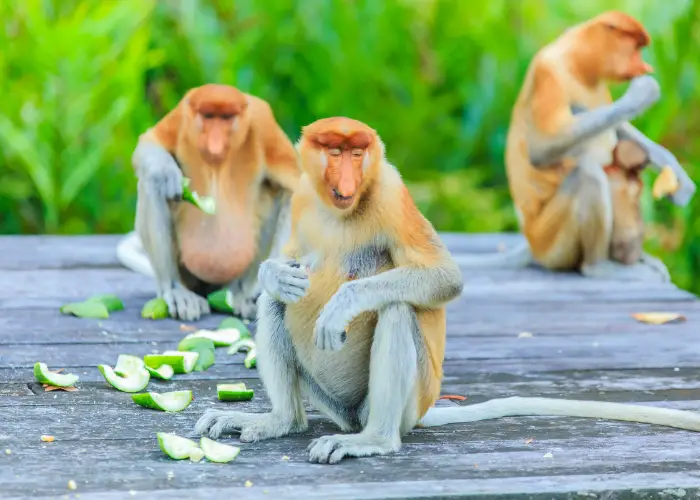
Availability of Resources
The availability of resources such as food, water, and suitable shelter significantly influences the formation and size of monkey troops.
Abundant resources can support larger troop sizes, while scarce resources may result in smaller groups or increased individual competition.
Real-Life Example 1:
The Macaque Stone Tools: According to a study published in Science Advances, researchers observed Burmese long-tailed macaques in Thailand using stone tools to crack open shellfish, nuts, and crabs.
The study revealed that the monkeys learned this skill from one another and passed it down through generations, showcasing the significance of social learning within monkey troops.
Real-Life Example 2:
Capuchin monkeys have been observed using tools to obtain food in their natural habitat. According to a study published in the “Journal of Human Evolution,” these primates use sticks to extract insects from tree crevices or stones to crack open nuts.
This behavior showcases the importance of social learning in monkey troops, as individual capuchins learn these techniques from their peers and pass them on to future generations.
Predation and Safety
Safety from predators is another crucial factor driving troop formation. Living in a group offers better protection against potential threats, as more eyes and ears can detect danger earlier.
Additionally, larger groups can work together to fend off or intimidate predators, increasing the overall survival rate.
Real-Life Example 3:
In a study conducted by Nature.com, researchers found that vervet monkeys have unique alarm calls for different predators.
This sophisticated communication system lets the monkeys warn each other about specific threats and coordinate their responses accordingly.
This study highlights the importance of communication in maintaining group cohesion and safety within monkey troops.
Reproduction and Raising Offspring
Reproduction and offspring rearing are essential aspects of troop formation and dynamics. Mating opportunities within the group can influence the size and structure of the troop.
Furthermore, the presence of infants and juveniles necessitates cooperative care and protection from the group, reinforcing social bonds and promoting group cohesion.
Benefits of Living in a Troop

Protection from Predators
Living in a troop offers monkeys increased protection from predators. Group vigilance helps in the early detection of potential threats, allowing individuals to respond more effectively.
Additionally, larger groups can work together to fend off or intimidate predators, increasing the overall survival rate.
Improved Foraging Efficiency
Troops enable monkeys to forage more efficiently as they can cover a wider area and share information about food sources.
By working together, the group can access difficult-to-reach resources and cooperatively solve problems, increasing food availability for all members.
Enhanced Social Learning
Living in a troop facilitates social learning among monkeys, allowing them to acquire new skills and behaviors by observing and imitating others.
This social transmission of knowledge enables individuals to adapt more effectively to their environment and promotes the development of advanced cognitive abilities.
Social Structure of Monkey Troops
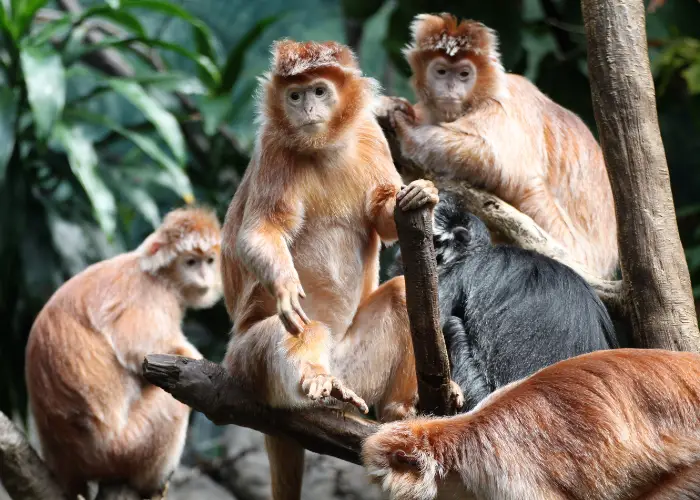
Hierarchies and Leadership
Monkey troops exhibit intricate social hierarchies with distinct leadership structures. The dominant male, sometimes called alpha, often leads the group and maintains order.
Dominance is established through displays of strength, aggression, or grooming rituals. Females also have their hierarchy, typically based on lineage and age.
Roles of Individual Monkeys Within a Troop
Each monkey within a troop plays a unique role, contributing to the group’s overall cohesion and functionality.
Some individuals may act as lookouts for potential predators, while others focus on grooming and nurturing relationships within the group. Roles can also be based on gender and age, with females predominantly caring for the young and males focusing on territorial defense.
Communication Among Troop Members
Communication is crucial for maintaining social bonds and coordination within a monkey troop.
Monkeys use a variety of sounds, gestures, and facial expressions to communicate with one another and convey their emotions.
They use specific calls to warn of predators or share the location of food sources. Grooming, play, and physical contact also serve as essential tools for reinforcing social bonds and expressing dominance or submission.
Now that we’ve explored the intricacies of monkey social structures let’s examine the factors that influence troop formation.
Types of Monkeys that are Typically Found in Troops

- Baboons – Found in various habitats across Africa and Arabia, including savannahs, woodlands, and forests. Average troop size: up to 100 individuals.
- Macaques – Native to Asia and found in various habitats, including forests, grasslands, and urban areas. The average troop size is 10 to over 100 individuals, depending on the species.
- Capuchin monkeys – native to Central and South America and found in various habitats, including rainforests, savannahs, and mangrove swamps. Average troop size: up to 35 individuals.
- Spider monkeys – native to Central and South America and found in tropical rainforests. Average troop size: 15 to 40 individuals.
- Howler monkeys – Found in Central and South America and various habitats, including rainforests and dry forests. Average troop size: 10 to 20 individuals.
- Squirrel monkeys are found in Central and South America and inhabit rainforests and other wooded areas. Average troop size: 10 to 100 individuals.
- Titi monkeys are found in South America and inhabit rainforests and other wooded areas. Average troop size: 4 to 20 individuals.
- Golden lion tamarins are found in Brazil and inhabit the Atlantic coastal forests. Average troop size: 2 to 8 individuals.
- Langurs – native to Asia and found in forests, mountains, and grasslands. Average troop size: up to 60 individuals.
- Colobus monkeys are found in Africa and inhabit forests and woodlands. Average troop size: up to 50 individuals.
- Vervet monkeys – Found in Africa and inhabiting savannahs, forests, and riverine areas. Average troop size: up to 60 individuals.
- Patas monkeys – found in Africa and inhabiting savannahs and grasslands. Average troop size: up to 60 individuals.
- Mandrills – found in Central Africa and inhabiting rainforests. Average troop size: up to 800 individuals.
Other Groups of Animals Collective Noun
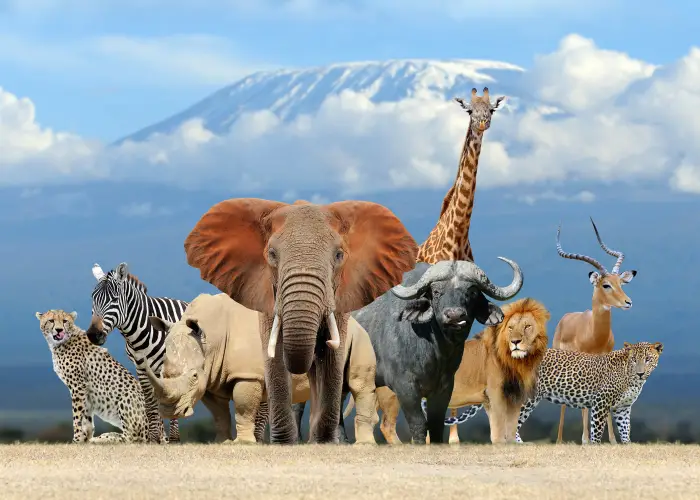
- Birds: Flock, flight, or congregation – These terms emphasize the common behavior of birds flying together and gathering in large groups. In contrast to monkeys, birds usually form groups for migratory or foraging purposes rather than for social interaction or hierarchy.
- Fish: School or shoal – Fish often group together in large numbers for protection against predators or for mating purposes. While certain fish species have some social structure, it is generally less complex than the social dynamics observed in monkey troops.
- Elephants: Herd – Elephants are known for their strong social bonds and matriarchal leadership, similar to the social structure observed in certain monkey troops, such as spider monkeys. However, elephant herds are usually led by a dominant female, contrasting with the male-dominant leadership often seen in monkey troops.
- Lions: Pride – Lion pride consist of related females, their offspring, and a small number of adult males. While there is a hierarchy within a pride, it is based more on family relationships and gender roles than the elaborate social structures seen in monkey troops.
- Wolves: Pack – Wolf packs are typically family units consisting of a breeding pair and their offspring. They have a hierarchical structure with an alpha male and an alpha female leading the group. The social dynamics of wolf packs are more similar to those of monkey troops, focusing on cooperation, communication, and shared responsibility for the group’s well-being.
- Bees (colony, hive): Bee colonies and monkey troops have complex social structures and cooperative behaviors. However, bee colonies are centered around a single queen with a division of labor among worker bees and drones. In contrast, monkey troops have more diverse social roles and typically have multiple males and females with complex hierarchies. Bee colonies emphasize cooperative work, while monkey troops focus more on social interactions and resource sharing.
- Rhinos (crash): Rhino crashes and monkey troops differ significantly in social organization. Rhino crashes are less structured, and their groupings are usually temporary, while monkey troops exhibit more complex and long-lasting social dynamics. Rhino groups are mainly formed for protection and resource sharing, while monkey troops have more intricate social interactions and cooperative behaviors.
- Crows (murder, congress): Crows and monkeys are both highly intelligent animals, known for their complex problem-solving skills and social interactions. However, the social structure of a crow group, or murder, is not as intricate as that of a monkey troop. Crows mainly gather for cooperative activities like foraging and mobbing predators. At the same time, monkey troops form more elaborate hierarchies, have tighter social bonds, and engage in a wider variety of cooperative behaviors.
These examples illustrate the diversity of animal group dynamics and highlight how the unique social structures of monkey troops set them apart from other species.
Conclusion:

Monkey troops play a vital role in the survival and adaptation of these intelligent animals.
Living in cohesive social groups provides monkeys with numerous advantages, including protection from predators, improved foraging efficiency, and enhanced social learning.
These benefits enable them to thrive in various environments and cope with their challenges.
Studying monkey troops offers valuable insights into the complexities of primate social behavior.
By understanding the dynamics, communication, and group structure of various monkey species, researchers can learn more about the evolution of social systems and cognition in primates, including our human ancestry.
Monkeys’ intricate and diverse social lives are a fascinating window into the broader world of animal behavior and cognition.
CHECK OUT OTHER INTERESTING MONKEY ARTICLES BELOW:
REFERENCES:
1. Monkey. (2022, December 19). In Wikipedia. https://en.wikipedia.org/wiki/Monkey
2. A barrel of Monkeys. University of Chicago Press. (2015, December 1). Retrieved April 26, 2023, from https://press.uchicago.edu/ucp/books/book/distributed/B/bo22277974.html

